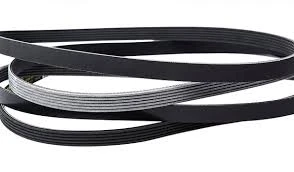- Arabic
- French
- Russian
- Spanish
- Portuguese
- Turkish
- Armenian
- English
- Albanian
- Amharic
- Azerbaijani
- Basque
- Belarusian
- Bengali
- Bosnian
- Bulgarian
- Catalan
- Cebuano
- Corsican
- Croatian
- Czech
- Danish
- Dutch
- Afrikaans
- Esperanto
- Estonian
- Finnish
- Frisian
- Galician
- Georgian
- German
- Greek
- Gujarati
- Haitian Creole
- hausa
- hawaiian
- Hebrew
- Hindi
- Miao
- Hungarian
- Icelandic
- igbo
- Indonesian
- irish
- Italian
- Japanese
- Javanese
- Kannada
- kazakh
- Khmer
- Rwandese
- Korean
- Kurdish
- Kyrgyz
- Lao
- Latin
- Latvian
- Lithuanian
- Luxembourgish
- Macedonian
- Malgashi
- Malay
- Malayalam
- Maltese
- Maori
- Marathi
- Mongolian
- Myanmar
- Nepali
- Norwegian
- Norwegian
- Occitan
- Pashto
- Persian
- Polish
- Punjabi
- Romanian
- Samoan
- Scottish Gaelic
- Serbian
- Sesotho
- Shona
- Sindhi
- Sinhala
- Slovak
- Slovenian
- Somali
- Sundanese
- Swahili
- Swedish
- Tagalog
- Tajik
- Tamil
- Tatar
- Telugu
- Thai
- Turkmen
- Ukrainian
- Urdu
- Uighur
- Uzbek
- Vietnamese
- Welsh
- Bantu
- Yiddish
- Yoruba
- Zulu
Ago . 13, 2024 13:46 Back to list
Understanding the Importance of Timing Belts and Their Role in Vehicle Performance and Longevity
The Importance of Timing Belts in Cars
The timing belt is a crucial component in the intricate machinery of modern vehicles, playing a vital role in ensuring that the engine operates smoothly and efficiently. It is a reinforced rubber belt that connects the crankshaft and the camshaft, synchronizing the rotation of the two to ensure that the engine's valves open and close at the appropriate times during each cylinder's intake and exhaust strokes. This precise timing is essential for optimal engine performance, fuel efficiency, and emissions control.
The Importance of Timing Belts in Cars
Most manufacturers recommend replacing the timing belt every 60,000 to 100,000 miles, but this can vary between different makes and models of vehicles. Drivers should consult their owner’s manuals for specific guidelines. Ignoring these recommendations can lead to costly repairs, as a broken timing belt can cause the pistons to collide with the valves, bending or breaking them, and potentially damaging the engine block itself. Such repairs can be tedious and expensive, emphasizing the cost-effectiveness of preventive maintenance.
timing belt for cars

In addition to age and mileage, factors such as driving conditions can also influence the lifespan of a timing belt. Frequent short trips, extreme weather, and heavy loads can cause additional stress on the timing belt, leading to a higher chance of failure. Regular inspection of the timing belt, especially when having other maintenance work done, can help identify any signs of wear or damage, such as cracks, fraying, or excessive stretching.
Timing belts often incorporate additional components such as tensioners and idler pulleys, which help maintain the proper tension and alignment. It is essential to replace these components simultaneously with the timing belt to ensure a comprehensive and effective repair. Failure to do so may lead to premature wear of the new belt or even a recurrence of timing-related issues.
Additionally, some vehicles utilize timing chains instead of belts. Timing chains are generally more durable and do not require regular replacement like timing belts. However, they still need maintenance and can also face issues such as stretching or becoming loose over time. As such, it is crucial for drivers to understand what type of timing mechanism their vehicle uses and follow the appropriate maintenance guidelines.
In conclusion, the timing belt is a crucial component of any car’s engine. Its role in synchronizing engine timing cannot be overstated, as it directly impacts an engine's performance and longevity. Adhering to maintenance schedules, recognizing the signs of wear, and ensuring a complete timing belt service are vital steps every car owner should take to avoid detrimental engine damage. Investing time and resources into proper timing belt care not only ensures the smooth operation of a vehicle but also provides peace of mind in the long run, making it an essential aspect of vehicle ownership.
-
Korean Auto Parts Timing Belt 24312-37500 For Hyundai/Kia
NewsMar.07,2025
-
7PK2300 90916-T2024 RIBBED BELT POLY V BELT PK BELT
NewsMar.07,2025
-
Chinese Auto Belt Factory 310-2M-22 For BMW/Mercedes-Benz
NewsMar.07,2025
-
Chinese Auto Belt Factory 310-2M-22 For BMW/Mercedes-Benz
NewsMar.07,2025
-
90916-02660 PK Belt 6PK1680 For Toyota
NewsMar.07,2025
-
drive belt serpentine belt
NewsMar.07,2025

